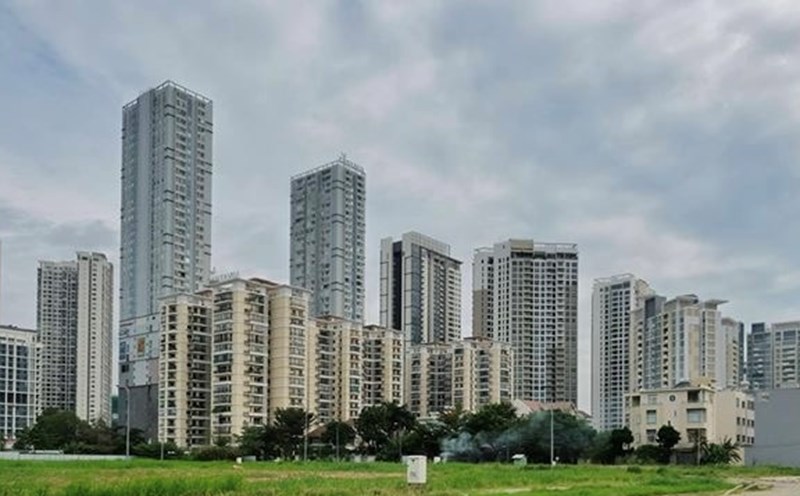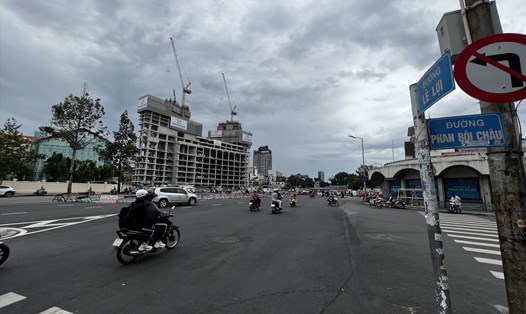A report from market research company JLL Vietnam shows that in the second quarter of 2025, the secondary selling price (re-selling buyers) of apartments in Ho Chi Minh City will average nearly 100 million VND/m2, an increase of 1.7% compared to the previous quarter and 9.4% compared to the same period last year. This price is mainly recorded in high-end projects in the inner city, the South and the old Thu Duc City.
According to data from the Batdongsan website, secondary apartment prices in Ho Chi Minh City have increased by nearly 33% compared to the same period in 2024. The rate of price increase is recorded the strongest for high-end projects in the East of Ho Chi Minh City, especially on Hanoi Highway and Thu Thiem area. Accordingly, secondary apartment prices around Hanoi Highway increased by 34%, Thu Thiem area increased by 33%, the old District 7 area increased by 28%, the old District 9 increased by 16%...
Market research shows that many projects have recorded an increase of 30-50% in just 2-3 years, from the affordable segment to the mid-high-end segment, despite the lack of improvement in product quality.
For example, an apartment on Vo Chi Cong Street, Phu Huu Ward, opened for sale in early 2019 at a price of 33 million VND/m2, is currently being transferred at a price of about 60 million VND/m2. From 2023 to now, the selling price has increased by more than 50%.
Another project on Song Hanh Street, also in Phu Huu Ward, was first opened for sale in 2017 at a price of 28 million VND/m2, now for sale at an average of 58 million VND/m2.
Mr. Nguyen Quoc Cuong, a real estate broker in Thu Thiem, said that secondary prices have increased rapidly but are not easy to trade. For example, he is looking for a transferor for a 74 m2 apartment for 8.2 billion VND. In the past two months, he has taken 6-7 guests to see the house but has not yet finalized the transaction.
According to Mr. Cuong, the apartment was bought by the owner in 2021 for 70 million VND/m2. From the third quarter of 2024, the apartment price level in Thu Thiem increased sharply to 95-110 million VND/m2, bringing the apartment value from 5.6 billion VND to more than 8 billion VND.
JLL Vietnam commented that the increase in the secondary market is mainly driven by the increase in selling prices in the primary market (investors offer). Accordingly, in the last quarter, the average primary price of apartments in Ho Chi Minh City reached 132 million VND/m2, continuing to record an increase of 1.6% over the same period.
Except for some projects developed in areas far from the city center such as Opus One (Thu Duc) with competitive prices of about 85 million VND/m2, most of the remaining primary projects under implementation have recorded selling prices from 160-320 million VND/m2, an increase of 1-3% compared to the previous quarter.
Dr. Nguyen Duy Phuong, Investment Director of DG Capital, commented that secondary apartment prices have increased sharply partly due to the continuous decline in new primary supply in Ho Chi Minh City in the past few years. The scarcity has caused buyers to shift to the secondary market, pushing up the price level. The "unusual" price increase rate of secondary apartments in recent times is the result of many groups deliberately pushing up prices. While real demand is mainly concentrated in the 2-4 billion VND segment, there are currently almost no apartments in the market under 3 billion VND and most of them have exceeded the 4 billion VND mark per apartment.
"In the current context, buyers with real housing needs are forced to pay a higher price to own a suitable apartment. However, if we consider the convenience, quality of the project and the community, many products are not commensurate with the advertised prices," Dr. Phuong shared.
Market research companies predict that this year, the real estate market in Ho Chi Minh City will welcome about 5,000-5,500 apartments in the high-end segment, accounting for nearly 80% of the primary basket of goods on the market. Apartment prices are expected to be more stable, no longer causing a sharp increase but also difficult to decrease in the context of limited land funds, escalating construction costs and additional land use fees that are still unknown.











